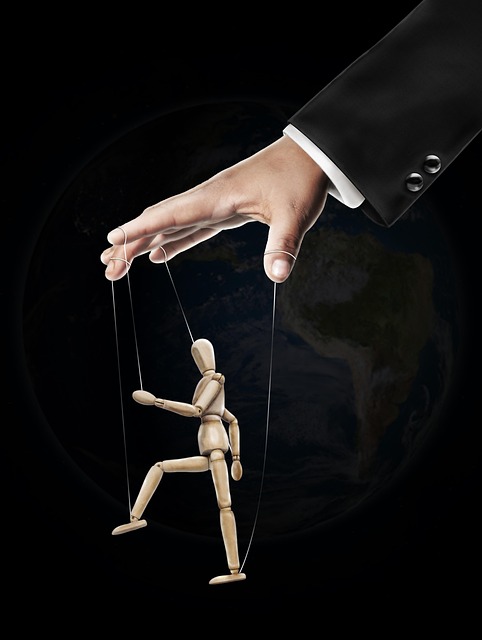TL;DR:
UK Poetry Collections Translation Services prioritize artistic integrity in translating poetry, navigating challenges like varying poetic structures and cultural nuances. Translators meticulously preserve rhythm, rhyme, metaphors, and sensory imagery to create meaningful connections between cultures. In the digital age, while AI tools enhance speed, human interpretation is crucial for preserving poetic essence, especially in culturally rich UK poetry collections. Future trends suggest a collaboration between AI and human expertise to further improve translation quality and artistic integrity.
In the realm of translation, particularly within UK Poetry Collections, maintaining artistic integrity presents a unique challenge. This article explores the intricacies involved in preserving the essence of poetic form, tone, and cultural nuances during interpretation. We delve into the roles of translators and their expertise, examine techniques for capturing metaphor and imagery, and analyze the impact of technology, including machine translation versus human interpretation. Additionally, we forecast future trends to ensure artistic integrity in the digital age, focusing on UK Poetry Collections Translation Services.
- Understanding Artistic Integrity in Translation: The UK Poetry Collections Perspective
- Challenges in Preserving Poetic Form and Tone
- Role of Translators: Expertise and Sensitivity
- Techniques for Capturing Metaphor and Imagery
- Cultural Considerations in Literary Translations
- Technology's Impact: Machine Translation vs. Human Interpretation
- Future Trends: Ensuring Artistic Integrity in the Digital Age
Understanding Artistic Integrity in Translation: The UK Poetry Collections Perspective

Artistic integrity in translation is a fundamental concept, especially within creative fields like poetry, where the visual and rhythmic aspects of words are crucial. UK Poetry Collections Translation Services recognize this challenge and strive to preserve the essence of the original work while adapting it for new languages. The process involves a deep understanding of both cultural nuances and literary techniques to ensure that the spirit of the poem remains intact.
By carefully considering meter, rhyme scheme, and the playfulness of words, translators aim to create a bridge between cultures without compromising artistic values. UK Poetry Collections, with their diverse portfolio, exemplify this approach, showcasing how translation can be both faithful to the source material and a work of art in its own right.
Challenges in Preserving Poetic Form and Tone

Translating poetry presents unique challenges, especially when it comes to preserving the original work’s artistic integrity. The poetic form and tone are integral to a poem’s overall impact, and these elements can be notoriously difficult to convey accurately in another language. UK Poetry Collections Translation Services acknowledge this complexity, striving to maintain the essence of the poem while adapting it for a new linguistic landscape.
One of the primary hurdles is the diverse nature of poetic structures across languages. For instance, rhyme schemes, meter, and stanzaic patterns in English poetry might not have direct equivalents in other languages. Translators must carefully navigate these differences, ensuring that the translated text retains its rhythmic flow and poetic appeal. Additionally, cultural nuances play a significant role; idiomatic expressions and metaphors often require creative interpretations to find suitable equivalents in the target language, preserving both meaning and aesthetic effect.
Role of Translators: Expertise and Sensitivity

In the realm of UK poetry collections translation services, translators play a pivotal role in preserving artistic integrity. Their expertise is not merely linguistic; it encompasses an profound understanding of cultural nuances and literary devices specific to poetry. Translators must possess a sensitivity to rhythm, rhyme, and metaphor, interpreting them accurately into the target language while capturing the essence of the original work. This delicate balance requires a deep appreciation for both the source and destination cultures, ensuring that the translated poem resonates with readers in a genuine and meaningful way.
The expertise and sensitivity of translators are particularly crucial when dealing with poetic forms that have specific structural requirements. Whether it’s maintaining the meter, preserving the play of words, or capturing the emotional tone, these aspects demand a translator who can adapt flexibly and thoughtfully. By doing so, they not only facilitate cultural exchange but also enrich the global literary landscape, making UK poetry collections accessible and appreciated worldwide.
Techniques for Capturing Metaphor and Imagery

In the realm of UK poetry collections and translation services, capturing the essence of metaphor and imagery is an art in itself. Translators must embrace the challenge of conveying abstract concepts and sensory details accurately while maintaining the original work’s aesthetic appeal. One effective technique involves employing equivalent metaphors from the target language, allowing readers to draw parallels and experience a sense of familiarity. For instance, a poet might describe “the moon as a silver coin” in their original piece; a translator could then offer a similar yet unique expression like “the moon, a gleaming disk of ice,” capturing the same ethereal beauty.
Additionally, visual imagery plays a pivotal role in poetry. Translators can enhance the impact by incorporating descriptive language that appeals to all senses. This may include using vivid adjectives, similes, and even personification to recreate the original poem’s sensory landscape. For example, describing “a river that wound its way through the valley” instead of simply translating it word-for-word ensures the poetry collection retains its visual allure, inviting readers to visualize and immerse themselves in the scene.
Cultural Considerations in Literary Translations

When translating literary works, especially poetry, cultural context is paramount. UK poetry collections often carry unique expressions and imagery deeply rooted in their original settings. Professional translation services must understand these nuances to preserve artistic integrity. Simply replacing words with direct equivalents can lead to a loss of poetic essence and cultural resonance.
Translators need to immerse themselves in the target culture to capture not just the literal meaning but also the emotional and aesthetic qualities inherent in the source text. This involves delving into cultural symbolism, idioms, and historical references to ensure the translated work resonates with readers in a new linguistic and cultural landscape, maintaining the original’s artistic integrity.
Technology's Impact: Machine Translation vs. Human Interpretation

In today’s digital age, technology has vastly transformed various industries, and translation services are no exception. The advent of machine translation tools, such as those employing Artificial Intelligence (AI), has sparked a debate among translators, particularly regarding their impact on artistic integrity in UK poetry collections. While these technologies offer speed and accessibility, they often struggle with the nuanced subtleties and cultural nuances inherent in literature.
In contrast, human interpretation provides a level of precision and creativity that machines cannot replicate. Skilled translators meticulously craft words to preserve the essence of the original text, ensuring that the poetic rhythm, metaphors, and cultural references resonate with readers. UK poetry collections, known for their intricate language and emotional depth, demand this nuanced approach. Professional translation services employing human interpreters thus play a pivotal role in safeguarding artistic integrity in literary works, especially when dealing with culturally rich content.
Future Trends: Ensuring Artistic Integrity in the Digital Age

In the digital age, as technology advances and global communication becomes increasingly seamless, the landscape of translation services is evolving rapidly. For UK poetry collections, this presents both challenges and opportunities to preserve artistic integrity. With advanced machine learning algorithms and neural machine translation (NMT), accuracy has improved significantly. However, these tools still struggle with nuances in language, cultural references, and poetic devices such as rhythm, rhyme, and metaphor.
To address these shortcomings, future trends suggest a combination of human expertise and AI-driven solutions. Human translators will continue to play a pivotal role in quality control, refining machine translations and ensuring that the essence of the original poetry is maintained. Moreover, new tools are emerging that leverage artificial intelligence to analyze and preserve poetic structures, offering promising prospects for UK Poetry Collections Translation Services.
In preserving artistic integrity within translations, especially for UK Poetry Collections, a delicate balance must be struck between linguistic accuracy and creative license. Translators play a pivotal role in this process, leveraging their expertise and sensitivity to navigate the challenges posed by poetic form, tone, metaphor, imagery, and cultural nuances. As technology evolves, with machine translation gaining traction, the importance of human interpretation cannot be overstated. Combining advanced tools with nuanced human touch ensures that literary works, regardless of origin, retain their beauty and essence in target languages, enriching global cultural exchanges. For UK Poetry Collections Translation Services, this commitment to artistic integrity is not just a best practice but a celebration of diverse voices and artistic expressions from around the world.
